Mytilimeria nuttalli Conrad, 1837Common name(s): Sea bottle, sea bottle clam, bottle clam, bladder clam |
|
| Synonyms: | 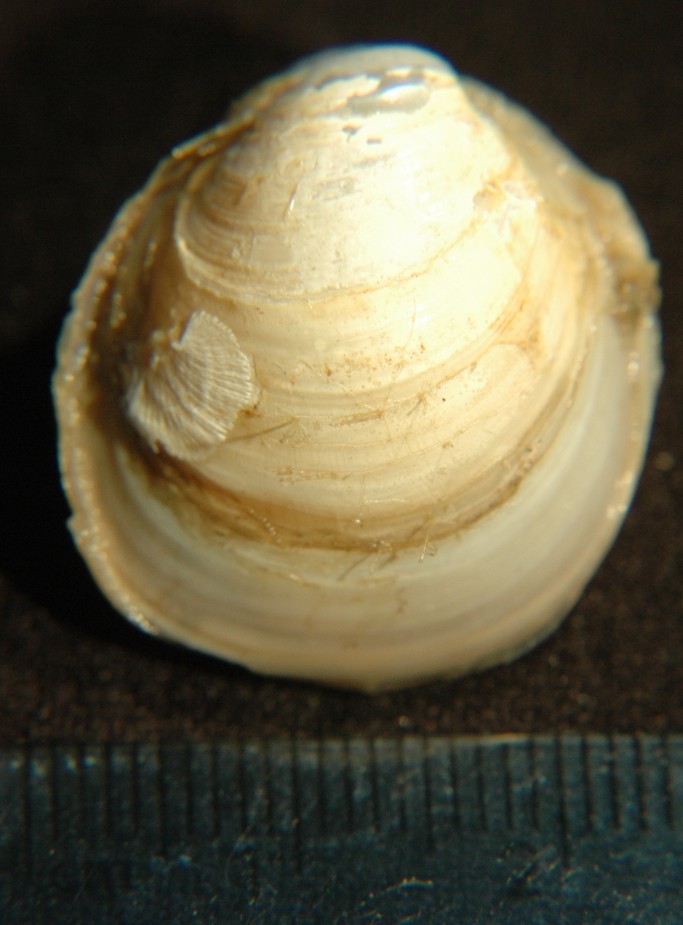 |
| Phylum
Mollusca
Class Bivalvia Subclass Anomalodesmata Order Pholadomyoida Family Lyonsiidae |
|
| Mytilimeria nuttalli found in the low intertidal in Guemes Channel | |
| (Photo by: Dave Cowles, July 2005). Identified with the help of Gene Coan | |
How to Distinguish from Similar Species: Members of most other families have hinge teeth. Other members of family Lyonsiidae such as Entodesma navicula are longer than high (not circular in outline) and do not live in ascidian colonies.
Geographical Range: Forester Island, Alaska to Isla Rondo, Baja California, Mexico
Depth Range: Low intertidal to 40 m
Habitat: Lives in ascidian colonies
Biology/Natural History: This species is almost always embedded in compound ascidian colonies, especially Archidostoma psammion and Cystodytes lobatus. Larve appear to settle on the ascidian colony and attach by a byssus. The clam eventually becomes surrounded by the colony except for a narrow slit for the siphons. The species is a hermaphrodite but doesn't spawn eggs and sperm at the same time.
| Return to: | |||
| Main Page | Alphabetic Index | Systematic Index | Glossary |
References:
Dichotomous Keys:Flora and Fairbanks, 1966
Kozloff 1987, 1996
Smith and Carlton, 1975
General References:
Harbo,
1997
Johnson
and Snook, 1955
Kozloff,
1993
Morris,
1966
Morris
et al., 1980
Scientific Articles:
Web sites:
Seashells
of
British Columbia
General Notes and Observations: Locations, abundances, unusual behaviors:
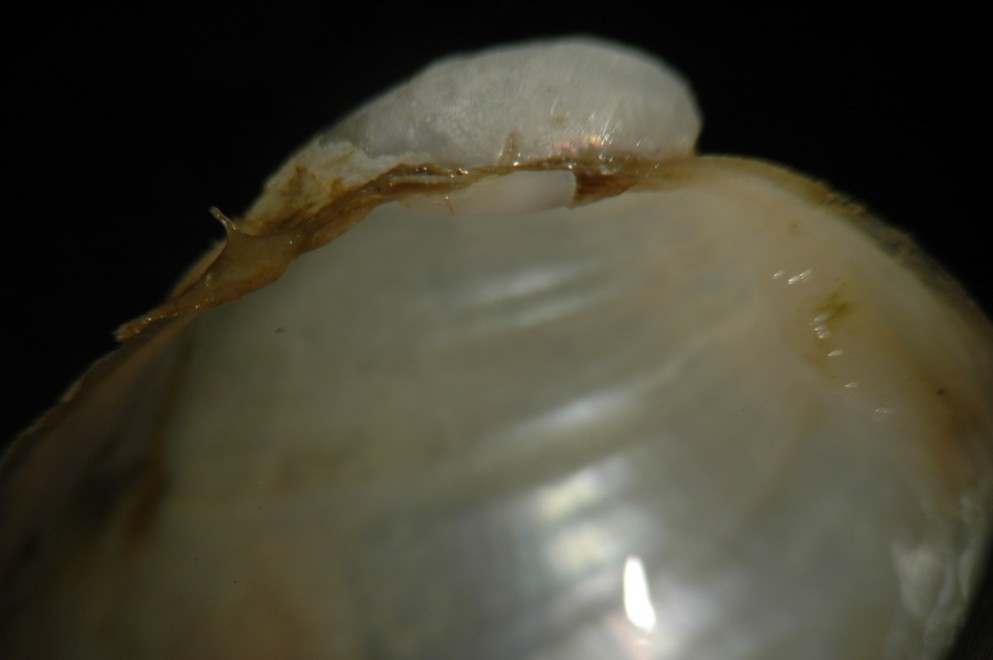
Species in this family (Lyonsiidae) have no hinge teeth. This
is the hinge on the left valve. Notice the calcified
shieldlike plate
that wraps around the hinge ligament from the left valve.
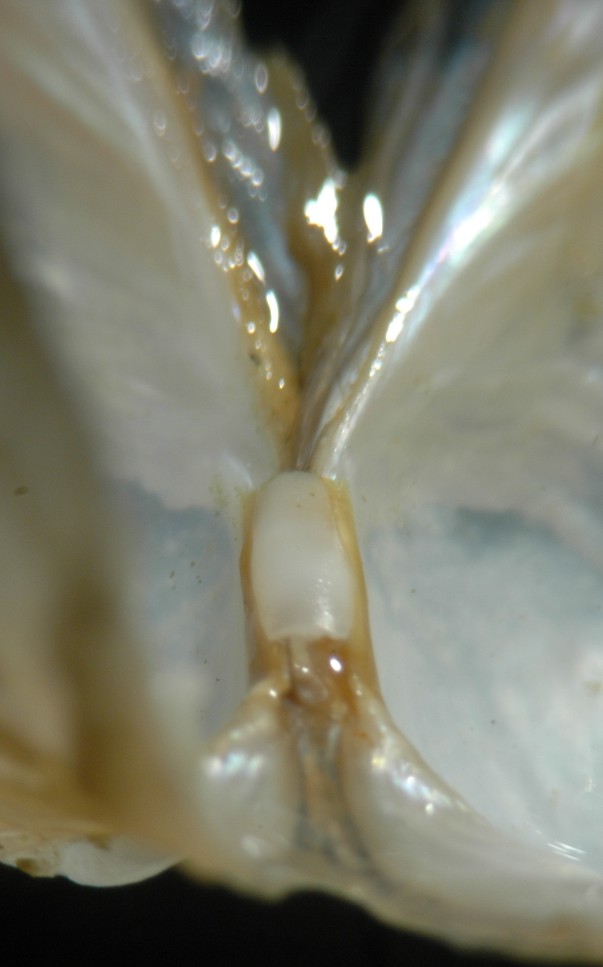
The platelike shield can be more clearly seen in this photo.
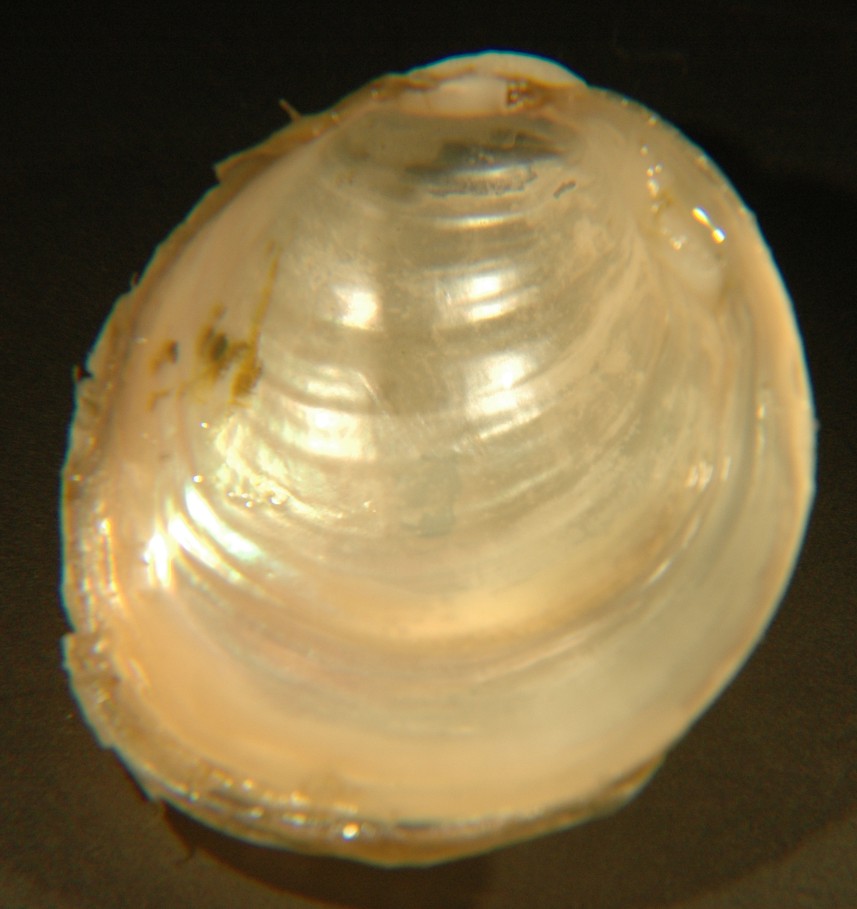
The interior of the shell is pearly but the pallial line and pallial
groove are difficult to distinguish.
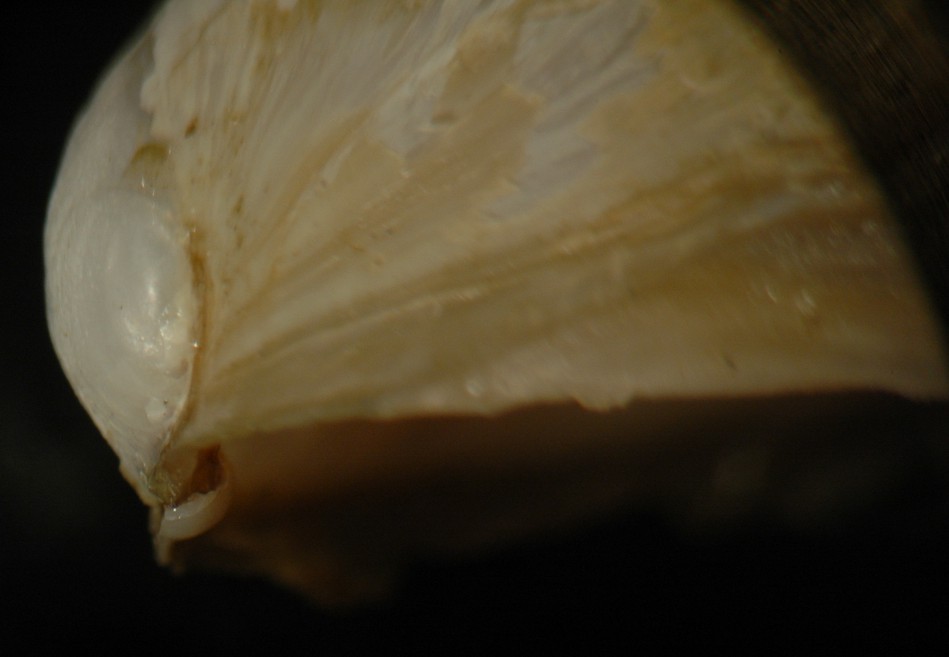
The shell is fairly inflated, as can be seen in this end-on view of
the left valve. The shieldlike plate which wraps around the
hinge
ligament can also be seen.
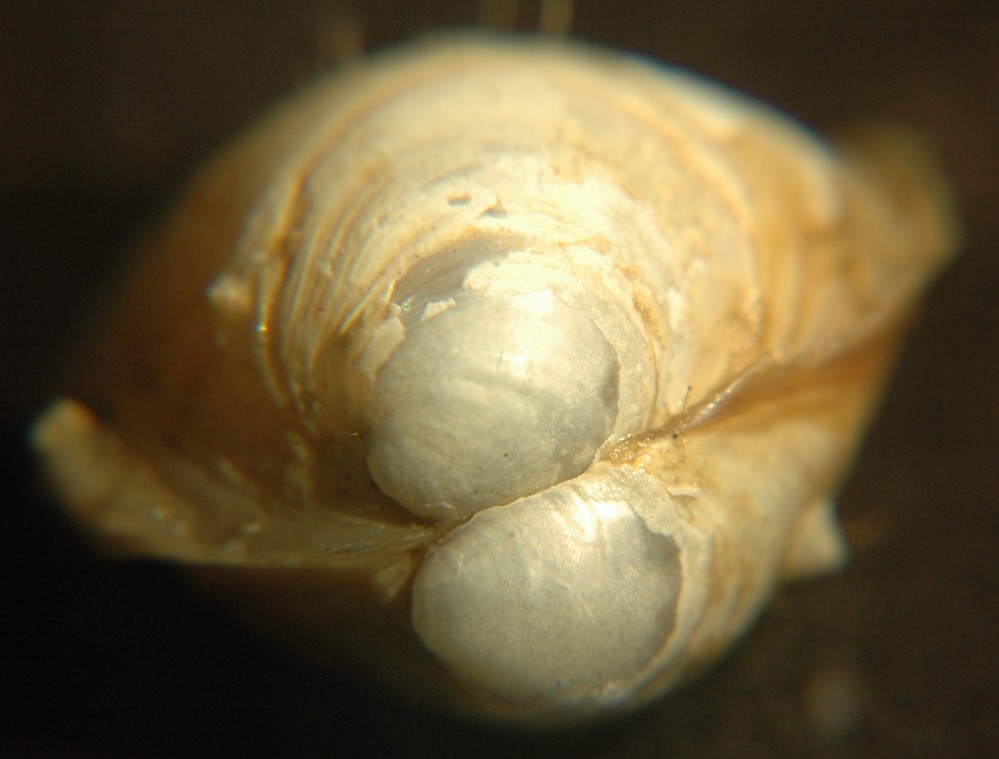
The species has large umbones which face anteriorly.
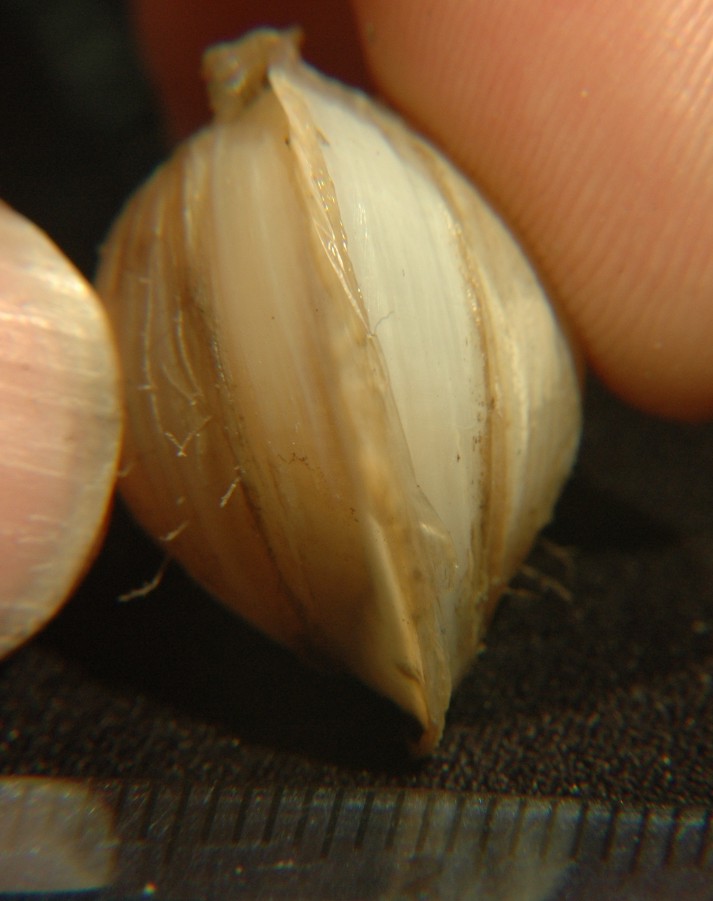
The shell is thin, and along the ventral edges is mostly
yellowish-brown
periostracum. In this view of a live individual, the thin,
flexible
periostracum along the ventral margin has distorted when the animal
closed,
forming into two nearly parallel plates.
Authors and Editors of Page:
Dave Cowles (2006): Created original page